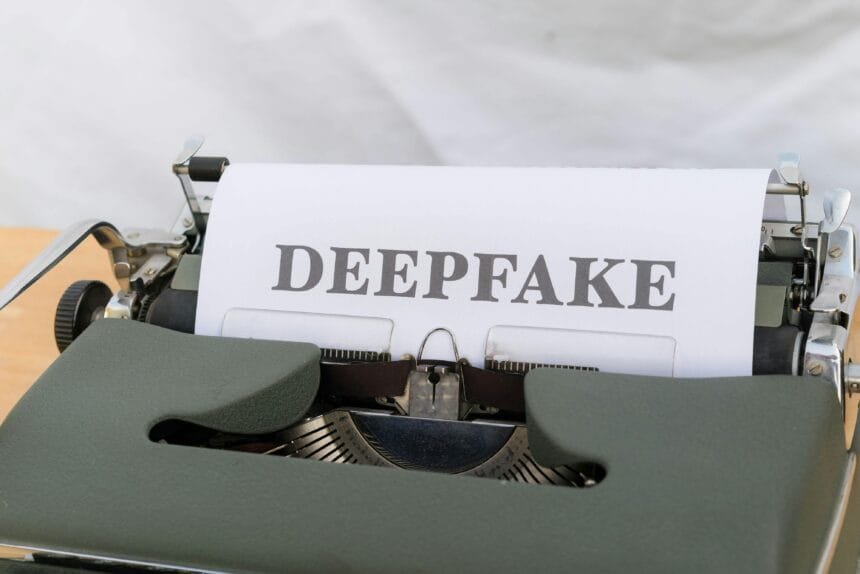In today’s digital age, the proliferation of disinformation poses a significant threat to individuals, organizations, and societies. Disinformation, which includes false or misleading information spread deliberately to deceive, can have far-reaching consequences. This article explains the concept of disinformation security, strategies to protect against deepfakes, essential steps for disinformation security, apps that help flag disinformation, and the profound impact of disinformation on our lives.
What is Disinformation Security?
Disinformation security refers to the measures and strategies implemented to protect against the spread of false or misleading information. It encompasses a range of techniques and technologies designed to identify, prevent, and mitigate the effects of disinformation. The goal is to safeguard individuals, organizations, and societies from the harmful impacts of disinformation campaigns, which can erode trust, polarize communities, and disrupt social harmony.
How to Protect Yourself from Deepfakes
Deepfakes are AI-generated videos or audio recordings that convincingly mimic real people, making it difficult to distinguish between genuine and fake content. Here are some strategies to protect yourself from deepfakes:
- Verify Sources: Always check the credibility of the source before trusting any media content. Reliable sources are less likely to disseminate deepfakes.
- Use Deepfake Detection Tools: Utilize tools like Deepware Scanner and Sensity AI to detect and verify the authenticity of videos and images.
- Stay Informed: Keep yourself updated about the latest developments in deepfake technology and detection methods.
- Enable Two-Factor Authentication: Protect your online accounts from being compromised and used to spread deepfakes.
- Be Skeptical of Unusual Requests: If you receive a suspicious video or audio message, verify its authenticity before taking any action.
Five Essential Steps for Disinformation Security
To effectively combat disinformation, it is crucial to implement a comprehensive disinformation security strategy. Here are five essential steps:
- Risk Assessment and Anticipation
- Description: Conduct a thorough assessment of potential disinformation threats and anticipate their impact on your organization or community.
- Implementation: Identify key areas vulnerable to disinformation, such as social media platforms, and develop strategies to mitigate these risks.
- Education and Awareness
- Description: Educate individuals and organizations about the dangers of disinformation and how to recognize it.
- Implementation: Conduct workshops, seminars, and training sessions to raise awareness about disinformation tactics and prevention methods.
- Technological Solutions
- Description: Employ advanced technologies to detect and counter disinformation.
- Implementation: Use AI-powered tools and algorithms to monitor and flag disinformation in real-time. Implement cybersecurity measures to protect against disinformation attacks.
- Collaboration and Partnerships
- Description: Foster collaboration between different stakeholders, including governments, tech companies, and civil society organizations.
- Implementation: Establish partnerships to share information, resources, and best practices for combating disinformation.
- Transparency and Accountability
- Description: Promote transparency in information dissemination and hold accountable those who spread disinformation.
- Implementation: Implement policies that require transparency in media reporting and enforce penalties for spreading false information.
Apps to Flag Disinformation
Several apps and tools can help identify and flag disinformation. Here are three notable ones:
- Bot Sentinel
- Description: Bot Sentinel is a free platform that detects and tracks troll bots and untrustworthy Twitter accounts.
- Features: Uses machine learning to classify accounts as trustworthy or untrustworthy and identifies bots.
- News Guard
- Description: A Chrome browser extension developed by Slate to identify and debunk fake news.
- Features: Provides trust ratings for news websites based on journalistic standards.Warns users about misinformation sources while browsing.
- Deepware Scanner
- Description: An AI-powered tool that scans videos for signs of deepfake content.
- Features: Allows users to upload videos and check for tampering, providing a detailed analysis of the content.
What is Sensity AI?

Sensity AI is used in deepfake detection , visual threat intelligence & disinformation security. It provides AI-powered tools to analyze and identify synthetic media, deepfake videos, and manipulated images used for misinformation, fraud, and cyber threats.
How Sensity AI Protects Against Disinformation
1. Deepfake & Manipulated Media Detection
- Scans videos, images, and audio to detect AI-generated fakes.
- Identifies synthetic faces, voice cloning, and altered footage.
2. Automated Threat Intelligence
- Monitors social media, news outlets, and digital platforms for misleading or harmful AI-generated content.
- Helps organizations track coordinated disinformation campaigns.
3. Corporate & Government Security
- Used by financial institutions, law enforcement, and governments to prevent identity fraud and political manipulation.
- Assists in protecting brands from reputational damage caused by fake endorsements and misleading content.
4. Journalism & Media Integrity
- Helps news organizations verify media sources.
- Flags altered images or videos before they go viral.
This article is not a promotion or elevation of any app, gadget or technology. Readers are requested to do their own due diligence carefully before using any app of significance. Above mentioned features are for your information only.
Use Cases
- Election security: Detects deepfake videos targeting politicians.
- Banking & finance: Prevents identity fraud using synthetic media.
- Social media moderation: Helps platforms remove misleading AI-generated content.
Impact of Disinformation on Our Lives
Disinformation can have profound and far-reaching impacts on individuals and society. Here are some key areas affected by disinformation:
- Public Health
- Impact: Disinformation about health issues, such as false claims about vaccines, can lead to public health crises. For example, during the COVID-19 pandemic, misinformation about the virus and vaccines contributed to vaccine hesitancy and increased infection rates.
- Political Stability
- Impact: Disinformation campaigns can undermine trust in democratic institutions and processes. False claims about election fraud and manipulated videos can erode public confidence in the electoral system and destabilize political environments.
- Social Cohesion
- Impact: Disinformation can polarize communities and exacerbate social divisions. By spreading false narratives that appeal to emotions like fear and anger, disinformation can create echo chambers and hinder constructive dialogue.
- Personal Safety
- Impact: Disinformation can incite violence and endanger personal safety. For instance, false reports on social media have led to instances of mob violence and vigilantism.
Disinformation security is essential in today’s digital landscape to protect individuals, organizations, and societies from the harmful effects of false information. As we use more and more gadgets and Apps for information and use the best of technology to make or lives easier, disinformation can be an hindrance. By implementing comprehensive strategies, utilizing technological solutions, and fostering collaboration, we can mitigate the impact of disinformation and promote a more informed and cohesive society.









